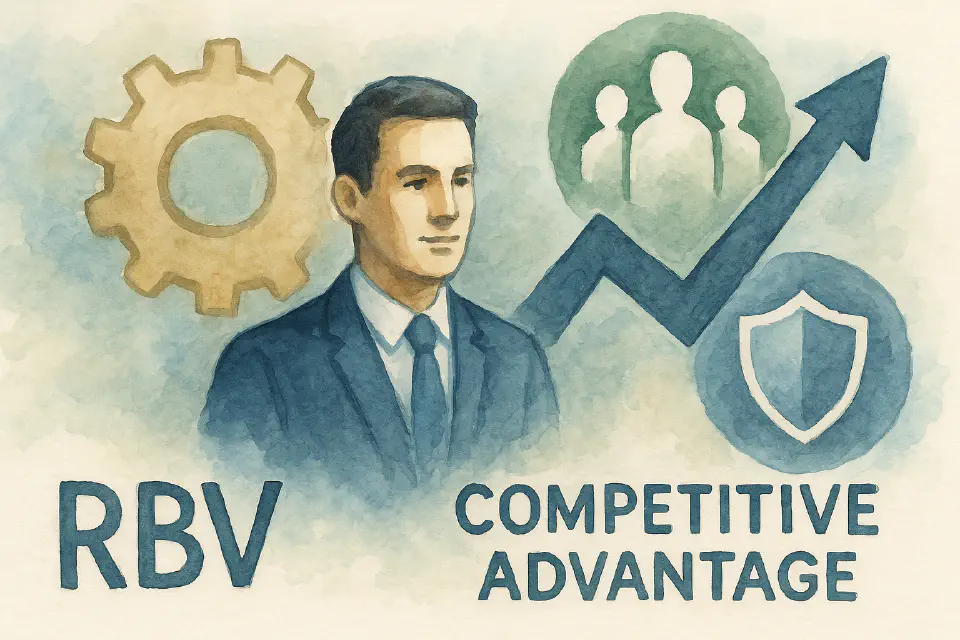
The Resource-Based View in HR
What if people were your most defensible competitive edge? That’s the core idea behind the Resource-Based View—and it changed HR forever.
The Resource-Based View (RBV) is a powerful strategic framework that reshaped how HR leaders think about people, capabilities, and culture. Developed in strategic management theory and brought into HR in the 1990s, the RBV suggests that sustainable competitive advantage comes not from external market position—but from internal resources that are valuable, rare, inimitable, and non-substitutable.
In short: your people can be your biggest differentiator.
Origins and Core Concepts
The RBV was popularized by academics like Jay Barney, who argued in 1991 that a firm’s resources must meet four conditions to provide sustainable competitive advantage:
To be strategic, a resource must be:
- Valuable: It helps the organization perform better.
- Rare: It’s not widely possessed by competitors.
- Inimitable: It’s difficult or costly to copy.
- Non-substitutable: No equivalent alternative exists.
This is often referred to as the VRIN framework.
Applying RBV to Human Resources
Under the RBV lens, people are not interchangeable. High-performing organizations:
- Develop unique combinations of talent and skills
- Nurture cultures that are hard to replicate
- Build systems that turn knowledge into action
This changed how HR viewed its role—from administrator to capability architect.
Implications for HR Strategy
The RBV supports several strategic HR practices:
- Talent management becomes a core capability, not a cost center.
- Culture is framed as a strategic asset, worth protecting and cultivating.
- Learning & development shifts from generic training to building unique skills.
- Employer branding aligns with identity and values—not just perks.
Strengths of the RBV in HR
- Promotes long-term thinking and internal investment
- Elevates the importance of culture and leadership
- Encourages strategic uniqueness, not blind benchmarking
Limitations and Critiques
- Hard to measure: Proving what’s truly “rare” or “inimitable” is difficult.
- Slow to adapt: Focus on internal strengths may overlook market shifts.
- May overvalue status quo: Can encourage rigidity if “unique” systems are outdated.
RBV vs Other HRM Models
Unlike Matching Models that emphasize alignment with external strategy, RBV emphasizes building internal excellence first. It’s less about following the business plan and more about developing strategic assets that shape the plan itself.
This aligns closely with modern ideas around:
- People-first strategy
- Organizational agility
- Culture as infrastructure
Best Practices for Using RBV in HR
Conclusion
The Resource-Based View helped HR claim its seat at the strategy table—not by copying business plans, but by offering something better: a unique source of advantage built on people, values, and internal strength.
In a world where everything can be copied, the way your people work together may be the only thing that can’t.